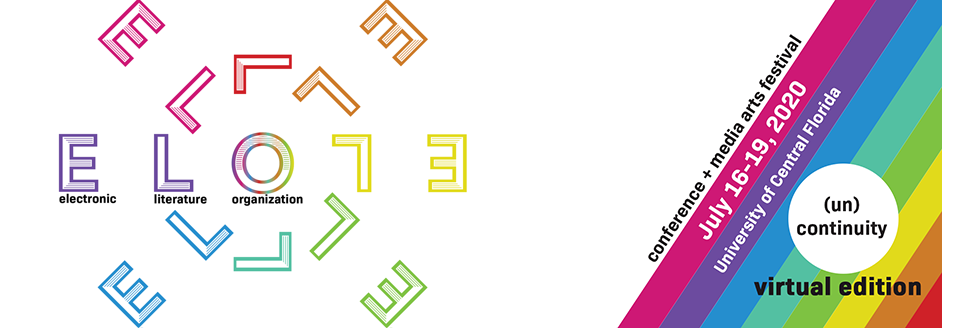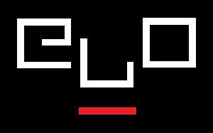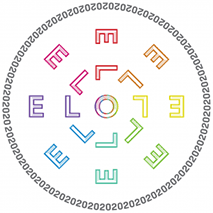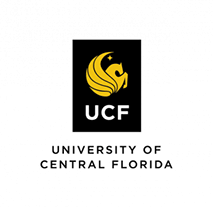Loading...
Submission Type
Conference Talk - Panel
Abstract
Since the first decades of the twentieth century, Peruvian poetic tradition has been characterized by experimental uses of language. Among these possibilities, some records tensioned this medium from the link with the plastic arts, as in the case of the poetry of José María Eguren, while others opted for the playing with the spatiality and visuality of the blank sheet, such as in the case of the work of Carlos Oquendo de Amat. However, it is not until the appearance of the poetry of César Vallejo, specifically with a poems like Trilce in 1922, that these breakages force us to think and analyze how subsequent generations or productions have been linked to language, not since its communicative instrumentalization of emotions, but from its experimental tension, of avant-garde roots, which reconsiders the visual and spatial character of the word, which we will call the plastic dimension. In that sense, this conference proposes to make a critical journey on the experimental lines of peruvian poetry during the twentieth century, based on the fixation in this plastic dimension that we define as visuality in the poetry. For this, our review will approach the work of poets in different time ranges such as that made from the editorial world by Javier Sologuren, the plastic arts by Jorge Eduardo Eielson, the interdisciplinary collage of César Toro Montalvo, the breaks with the written medium of José Luis Ayala, among others. In the same way, as a consequence of the above, we will also show what has been produced by new artists in these first two decades of the 21st century who explore the liminality of the digital medium from a conscience of the written medium as done by José Aburto from Web design, Enrique Beó from hypertext and transmedia narratives, Ánima Lisa collective from philosophy and video projection, Michael Hurtado from art and new media, or Michael Prado from graphic design and conceptualism. In this way, this balance will allow us to present four possible lines of action: the importance to show language games, the relevance of conscience of the use of the support, the need to return to the plastic dimension of writing and the reconsideration of other dimensions of the word. To demonstrate and exemplify our proposal, this conference will introduce the works by the artists Enrique Beó, Michael Hurtado y Michael Prado, who will reflect on how their practices, from multiple disciplines, are installed in the peruvian experimental poetic tradition, that not only embraces the complex, but also presents the problematic figure of the creator as an agent that transits and transgresses his limits. Therefore, this intervention will value our peruvian poetic tradition, in which the idea of tradition does not necessarily mean continuity, but creation since a work in which to revisit is to question the above done and question ourselves like creators that came from another record or discipline.
Included in
Book and Paper Commons, Computational Linguistics Commons, Digital Humanities Commons, Graphics and Human Computer Interfaces Commons, Interactive Arts Commons, Interdisciplinary Arts and Media Commons, Latin American Literature Commons, Other Film and Media Studies Commons, Philosophy of Language Commons, Spanish Literature Commons, Visual Studies Commons
Poetry for seers or the peruvian visual poetic tradition in front of new media
Since the first decades of the twentieth century, Peruvian poetic tradition has been characterized by experimental uses of language. Among these possibilities, some records tensioned this medium from the link with the plastic arts, as in the case of the poetry of José María Eguren, while others opted for the playing with the spatiality and visuality of the blank sheet, such as in the case of the work of Carlos Oquendo de Amat. However, it is not until the appearance of the poetry of César Vallejo, specifically with a poems like Trilce in 1922, that these breakages force us to think and analyze how subsequent generations or productions have been linked to language, not since its communicative instrumentalization of emotions, but from its experimental tension, of avant-garde roots, which reconsiders the visual and spatial character of the word, which we will call the plastic dimension. In that sense, this conference proposes to make a critical journey on the experimental lines of peruvian poetry during the twentieth century, based on the fixation in this plastic dimension that we define as visuality in the poetry. For this, our review will approach the work of poets in different time ranges such as that made from the editorial world by Javier Sologuren, the plastic arts by Jorge Eduardo Eielson, the interdisciplinary collage of César Toro Montalvo, the breaks with the written medium of José Luis Ayala, among others. In the same way, as a consequence of the above, we will also show what has been produced by new artists in these first two decades of the 21st century who explore the liminality of the digital medium from a conscience of the written medium as done by José Aburto from Web design, Enrique Beó from hypertext and transmedia narratives, Ánima Lisa collective from philosophy and video projection, Michael Hurtado from art and new media, or Michael Prado from graphic design and conceptualism. In this way, this balance will allow us to present four possible lines of action: the importance to show language games, the relevance of conscience of the use of the support, the need to return to the plastic dimension of writing and the reconsideration of other dimensions of the word. To demonstrate and exemplify our proposal, this conference will introduce the works by the artists Enrique Beó, Michael Hurtado y Michael Prado, who will reflect on how their practices, from multiple disciplines, are installed in the peruvian experimental poetic tradition, that not only embraces the complex, but also presents the problematic figure of the creator as an agent that transits and transgresses his limits. Therefore, this intervention will value our peruvian poetic tradition, in which the idea of tradition does not necessarily mean continuity, but creation since a work in which to revisit is to question the above done and question ourselves like creators that came from another record or discipline.




Bio
Enrique García (Lima, 1982). He has a degree in Literature from the Universidad Nacional Federico Villarreal (Perú), with studies in Audiovisual Arts at the Universidad Nacional de La Plata in Argentina, Master in Communications at the Pontificia Universidad Católica del Perú. Diplomas in Cultural Management, Media Arts and Audiovisual Production. He obtained a research prize from CONCYTEC in 2013. He works as a teacher, creator and content consultant, cultural manager, writer, screenwriter and researcher. He is founder and director of the Ojo Móvil audiovisual training center. Under the pseudonym of Enrique Beó he has published the poetry books Para navegar al Sol (2004); Abanico (2005); Enrique Beó (2005); Jmwzrrodizzklxcvglkl (2007); Enrique extravagancia (2008); the hypertextual poemas Poemas Binarios (2010); Poemas Desordenados 1999/2011 (anthology published in Paraguay); Para Los Idos (2012); and the transmedia poetry Project Papel (2017). He has also done various audiovisual works such as Ver/Verás (2008), Mentápolis (2009), Un hombre herido se arrastra por el suelo (2011), Tensión (2012), Grita (2013), La videoinstalación: Violencia del Cuerpo (2013), Los gigantes nos observan (2014), the videos of the transmedia project: Papel (2014-2016), the documentary Sabogal (2017) and the short film Tres Sesenta (2019).
https://papel12.webnode.es/?fbclid=IwAR0o8TdrtWCYSKgizKmHSOP9KYIhw4TJYoNvpOkuA3RFMCOx_3mJgmTKZbY
Pamela Medina (Callao, 1988). She is an essayist, editor and teacher, with a Master's Degree in Peruvian and Latin American Literature from the Universidad Nacional Mayor of San Marcos. Her research analyzes the interdisciplinary relation between art and literature, among the main ones, stands out her approaches to the written and unwritten work of Jorge Eielson and the plastic and poetics work of José María Eguren. Some of these reflections have spread in academic journals such as Desde el Sur, Contextos and Lucerna, as well as in conferences of study and research in Latin America (Jalla-e 2010, Jalla 2014, Jalla 2016). She has published, with the National Library of Peru, El ojo de palabra First show of art and visuality in peruvian poetry of the century XX (2016). Currently, as part of his work in the doctorate in Literature Peruvian and Latin American at the Universidad Nacional Mayor de San Marcos, conducts research on the relationship between image and word in poetry Peruvian of the twentieth century.
https://revistas.cientifica.edu.pe/index.php/desdeelsur/article/view/40
https://www.youtube.com/watch?v=VyLiZFynOA8&t=1755s
Michael Prado (Lima, 1988). He is a graphic designer. Currently prepares his thesis of anthropology on production of the urban landscape from the poster design at the Pontificia Universidad Católica del Perú. Work as a designer editorial at the faculty publications office of architecture and urbanism of the same university. In 2012 he founded la Crema, an editorial platform that explores publication as an artistic practice as well as the materiality of language in the contemporary world. Among its production you can find typographical fonts, posters and books (poetry books, bookworks, artist books). As a graphic designer has participated in the Latin American biennial of typography tipos latinos (2014), Bienal Iberoamericana de Diseño de Madrid (2016), as well as in the four-year poster of Bardejov (2017). His visual poetry has been exhibited at the University Poetry Center from Tucson: birupirúperú: peruvian visual poetry (2017). As an artist he participated in the national arts competition visual passport for an artist (2017), curated by Nathalie Leleu (France, 1966). He is a member of the collective poetry ánima lisa.
https://instagram.com/lacremapublicaciones?igshid=qavh3y4dzgu8
Michael Hurtado (Lima, 1984).
He is a mathematician from the Universidad Nacional de Ingeniería, with postgraduate studies in applied mathematics by the Pontificia Universidad Católica del Perú (PUCP), graduated from the FabAcademy program at CBA / MIT in digital manufacturing technologies. In addition, he is a member of the American Mathematical Society (AMS), Institute of Electrical and Electronics Engineers (IEEE) and Por una comunidad de artes visuales. As an artist he has participated in various exhibitions, he received the prize VIDA16 of Fundación Telefónica for art projects and artificial life in Spain. In 2018 he gave a TED talk about art, science and technology. He is also a member of the Electronic Literature Organization (ELO), his cyberpoems have been published on the interactive literature website illitera.com. He is currently a teacher in the art department of the PUCP, where he teaches a course on art and new media. He also collaborates as an associate researcher in art and new media projects in institutions such as the Universidad Peruana de Ciencias Aplicadas and the Universidad de Ingeniería y Tecnología.
https://michaelhurtado.github.io/emojiart/
https://michaelhurtado.github.io/UNICODE/index.html
https://michaelhurtado.github.io/signos/index.html
https://michaelhurtado.github.io/ciberpoesia/ciberpoema1/index.html
https://michaelhurtado.github.io/ciberpoesia/ciberpoema2/index.html
https://michaelhurtado.github.io/ciberpoesia/ciberpoema3/index.html
https://michaelhurtado.github.io/ciberpoesia/ciberpoema4/index.html
https://michaelhurtado.github.io/ciberpoesia/ciberpoema5/index.html
https://michaelhurtado.github.io/ciberpoesia/ciberpoema6/index.html
https://michaelhurtado.github.io/ciberpoesia/ciberpoema7/index.html